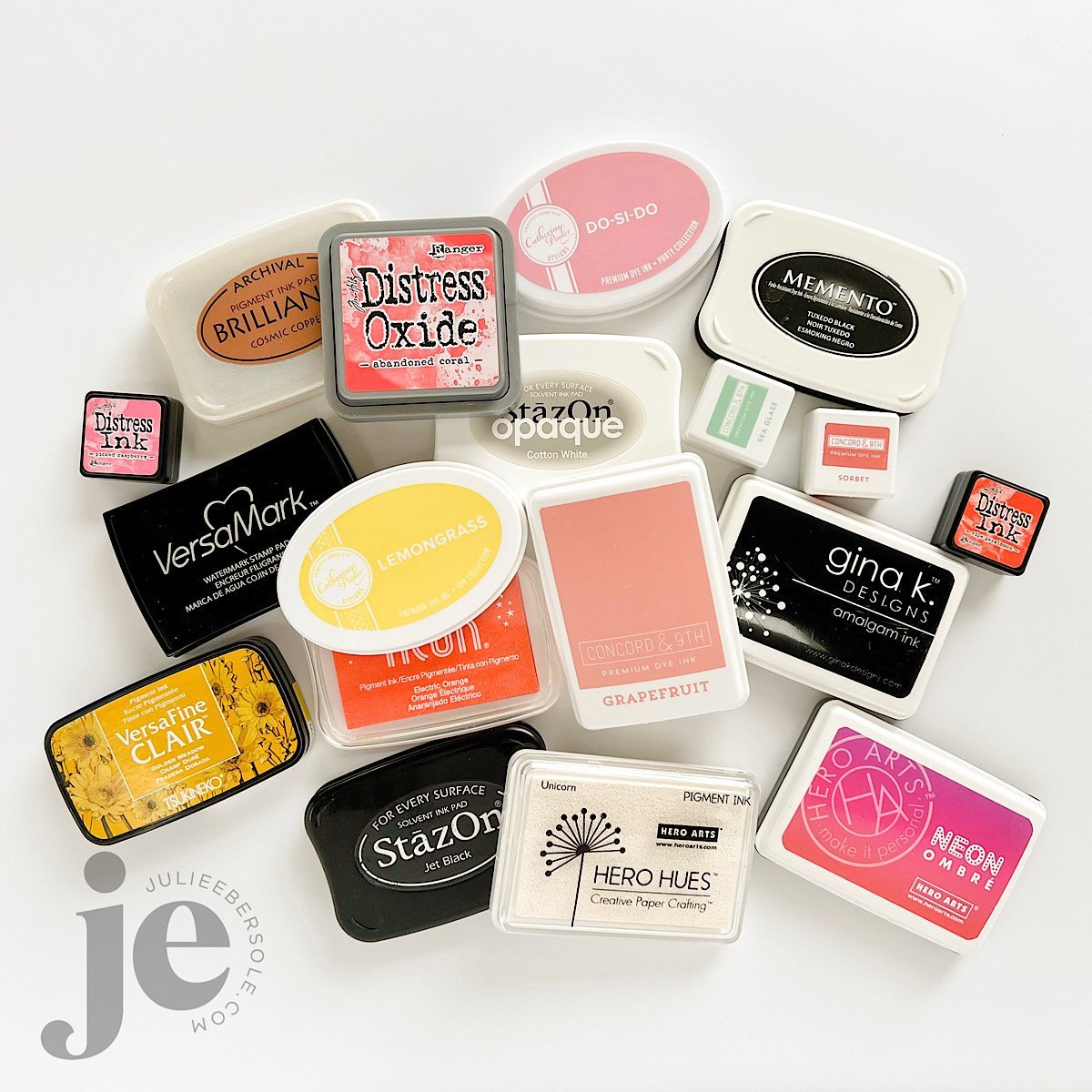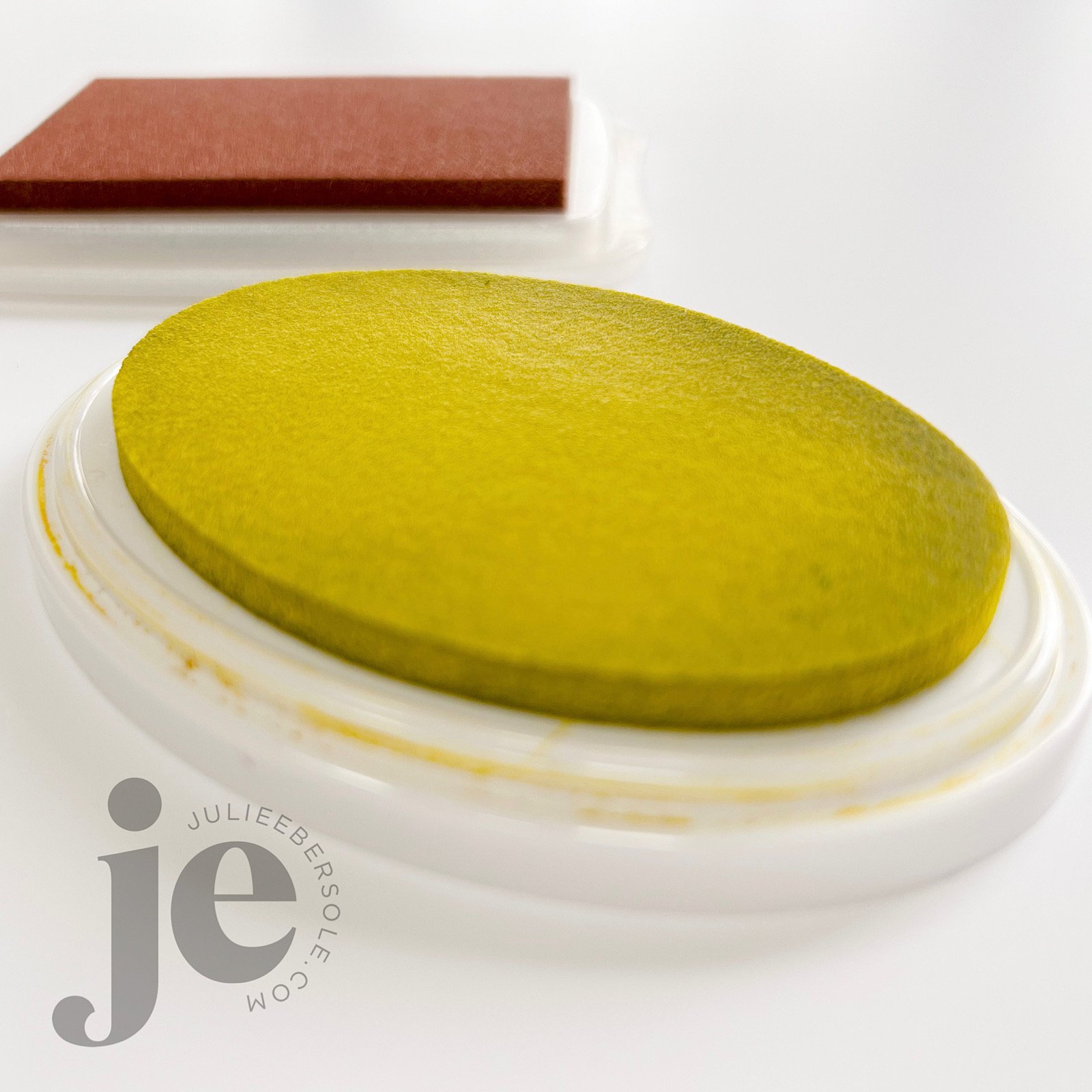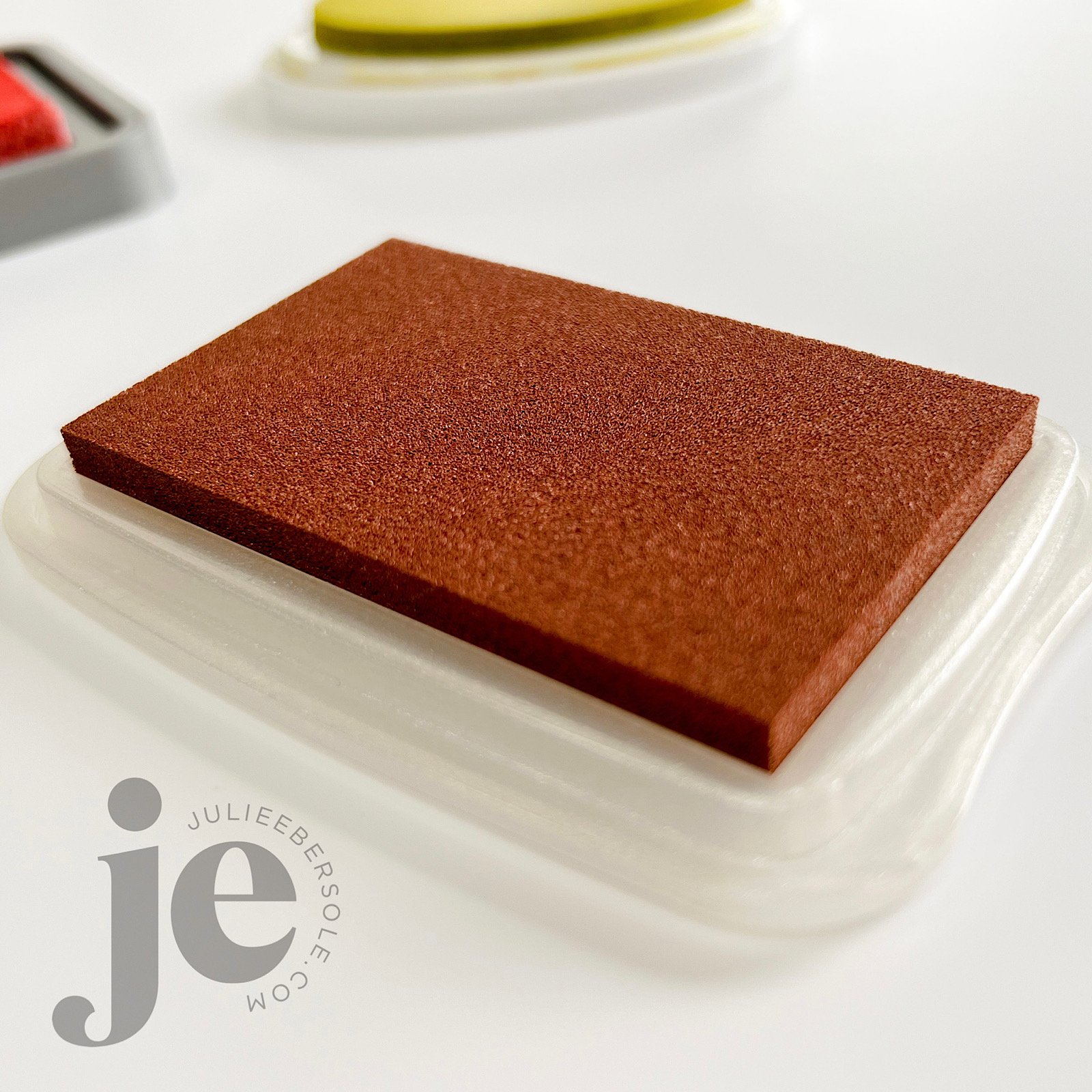People often ask, what’s the best ink. Honestly, there is no “best”, nor is there one ink to rule them all . (heh, heh, heh . . . LOTR fans will totally get me with that reference.) Inks come in a variety of formulas and ink pad formats, and ink pad sizes (full-size or cubes, often referred to as “minis”).
Click on the pics to enbiggan and see in greater detail.
In basic terms, these are the primary categories of ink:
DYE
Dye inks are typically very fluid, quick drying on porous surfaces, as well as glossy style card stocks.
They can be water-soluble (non-permanent), or permanent, and, with the exception of dark colors, can have a lovely transparency to them.
Some are archival quality, bleed-proof and fade resistant.
These ink pads usually come with a felt pad, topped with linen, but a now increasingly popular style of dye ink pad utilizes a gel foam style ink pad. These (gel foam) are my personal favorite type of dye ink pads; over time and use, linen topped felt pads can fray, with stray threads needing to be trimmed off. On the other hand, linen pads seem like they can withstand more aggressive techniques, such as direct-to-paper/ink-dragging, etc.
Dye inks are not typically designed for heat embossing, but under certain circumstances some can be, if you work fast or stamp onto a particular surface that allows them to remain wet for a longer period of time, such as vellum.
PIGMENT
Pigment inks are a thicker formula, almost resembling a thin paint, with a slower drying time and an opaque finish.
Tend to be fade resistant and richly saturated in color.
Can be stamped onto porous surfaces, but will never dry on glossy/coated card stocks and must be sealed with heat-embossing.
Come with a foam/sponge style pad.
Pigment inks are designed for heat embossing; they often contain glycerine, which gives the ink a slower drying time.
CHALK
Similar to pigment ink, these inks have a slower drying time, are opaque and have a distinctive chalky finish that you can see and actually feel on the paper surface.
Typically have a foam/spongey like pad.
Chalk inks often do not work well for heat embossing because the chalky ingredient in the formula doesn’t allow embossing powder to stick well.
HYBRID
These inks may contain the properties of several of the aforementioned inks, which may vary by brand.
SOLVENT PERMANENT
Can be dye OR pigment and are formulated for use on glossy coated card stocks as well as slick surfaces, such as acetate, polyshrink, glass, vellum, etc. And, yes, they will/do dry!
Pigment style solvent inks are slower drying but can be speed heat set with an embossing tool or sealed with embossing powder.
Due to their permanent nature, they will stain your stamps quite severely; this doesn’t typically affect their performance, but stain removal will require the use of a specialty or solvent type stamp cleaner. In some cases, with clear stamps, you may never “completely” remove the staining. I highly recommend Ultra Clean (affil) for deep cleaning stamps, but work in a well-ventilated area.
METALLIC
Pigment based and slower drying on porous surfaces; can be speed heat-set with an embossing tool.
Most will require sealing with embossing powder on glossy/coated surfaces, vellum, etc.
Exception: Some brands of metallic pigment inks are formulated specifically to dry on non-porous surfaces, such as Brilliance by Tsukineko/Imagine Crafts.
WATERMARK
Think of watermark ink as a completely CLEAR pigment ink.
On darker colored card stocks, it will deepen the shade of the paper color, hence why it is called “watermark” ink.
Can be heat-embossed.
Slower drying on porous surfaces; will require sealing with embossing powder on glossy/coated card stocks, vellum, etc.
EMBOSSING
Basically, a pigment style ink that may have a slight tint to it, i.e. pale blue.
Specifically designed/intended for heat-embossing, with some brands offer even slower drying properties.
Do I have personal favorites? Of course—every stamper does!
I looooooove water-based dye inks for quick and easy stamping: Concord & 9th as well as Catherine Pooler offer a wide range of colors and are my normal go-to inks.
If I’m coloring outline images, I tend to reach for Versafine Clair in Nocturne, as it is a little faster drying pigment ink and is a rich dark black. I also love Fallen Leaves, which is more of a black brown. VFC can also be sealed with clear embossing powder for coloring with alcohol markers (FYI, it does NOT play nice unsealed when coloring with Copics)
For coloring with alcohol markers, i.e. Copics, I tend to reach for Memento Dye ink in Tuxedo Black, but many folks also like the Gina K Amalgam Ink in Obsidian because it works for water-based, alcohol and dry mediums like colored pencils—a rare tri-fecta in the world of inks!
Favorite white ink on dark surfaces? Hero Arts Unicorn Pigment has great opacity!
Heat embossing in general? Versamark is my preferred and I love using it for watermark stamping on mid-darker colored paper.
Delicata Golden Glitz is probably the most beautiful gold metallic ink I’ve ever stumbled across; I prefer it “nekked” (un-embossed) because the shimmer is drop-dead gorgeous!
That covers the basics of ink, but if you have any questions I didn’t happen to answer, ask away in the comments and I will follow up with answers!
Have an excellent—and I hope, crafty—weekend!
Disclosure: This post includes my affiliate link(s). If you use my links to make a purchase, thank you so, so much for your support!




